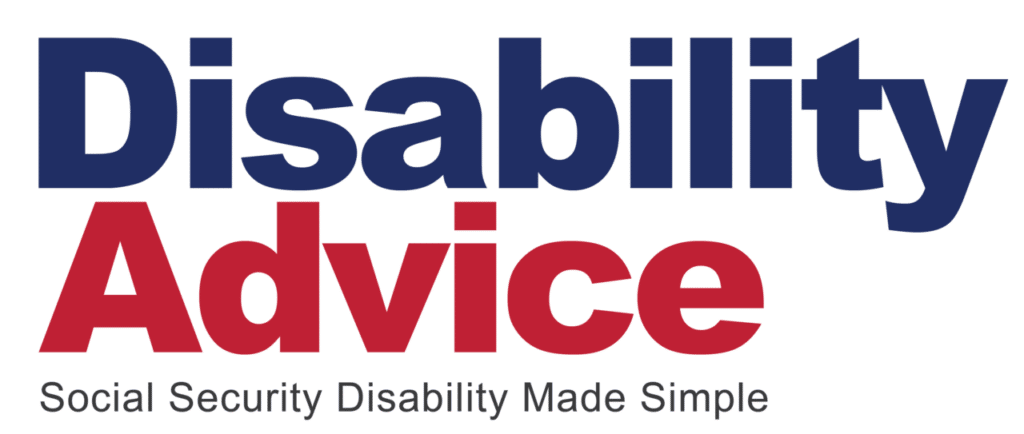A portion of your Social Security Disability Insurance benefits, or SSDI, may be taxable, depending on your income from all sources. The maximum percentage of your benefit that may be subject to federal income taxes is 85 percent. However, most people’s Social Security is not taxable.
According to the Social Security Administration, approximately 40 percent of people receiving any type of Social Security benefits have taxable Social Security income. Most people who pay taxes on Social Security only pay federal income taxes, but a few states also impose taxes on Social Security benefits. Understanding the tax laws governing SSDI payments is important to avoid overdue taxes and penalties.
How are Social Security Benefits Taxed?
Your Social Security benefits may be taxable if you receive Social Security Disability Insurance, retirement, or survivor benefits. These benefits are only taxable if your income exceeds the thresholds set by Congress. Supplemental Security Income, or SSI, is never taxable.
If Social Security payments are your only income, your benefits are probably not taxable. However, the federal government counts more than just wages as income. If you receive income from interest, self-employment, dividends, or any other source, you must include this income when determining whether you owe taxes on your benefits under Social Security tax rules.
Income Thresholds When Calculating Taxable Benefits
Your combined income and filing status determine whether your benefits are taxable and how much are subject to tax. The IRS requires you to consider income from all sources when calculating your taxable Social Security benefits, including the following:
- Wages
- Interest
- Pensions
- Dividends
- Capital gain distributions
- Withdrawals from tax-deferred accounts, such as IRAs and 401(k)s
Your Social Security benefits are not subject to federal income tax if you are single and your income is lower than $25,000. This threshold applies to anyone who files as single, the head of household, married and filing separately, or a qualifying widow or widower. If you are married and filing jointly, the threshold is $32,000.
If your combined income is higher than these levels, either 50 or 85 percent of your Social Security benefits will be taxable, as shown below:
Annual Income | Percent of Benefits Taxable |
$25,000 – $34,000 | 50% |
$34,001+ | 85% |
Annual Income | Percent of Benefits Taxable |
$32,000 – $44,000 | 50% |
$44,001+ | 85% |
Income Calculation and Calculating Taxes
Calculating which of your benefits are taxable requires the following three steps:
- Calculate your combined income.
- Determine what percentage of your Social Security benefits will be taxable.
- Calculate the dollar amount of your benefits that will be taxable.
Calculate Your Combined Income
Your combined income is the total of all of your sources of income besides Social Security and half of your Social Security, as shown in the example below:
- The first step is to divide your total Social Security benefit by two to calculate one-half of your Social Security benefit.
- The first step is to divide your total Social Security benefit by two to calculate one-half of your Social Security benefit.
Calculating Your Tax Liability
Continuing the example above, compare the $40,000 to the thresholds in the tables above, paying close attention to your filing status. Your filing status can significantly affect your Social Security benefit taxation. If you are married and filing jointly, your income falls within the 50 percent category because your income is above $32,000 but below $44,000. You will need to calculate the dollar amount by which your benefits exceed the $32,000 threshold by performing the following steps:
To calculate the taxable amount:
- Subtract $32,000 from your income:
- Subtract $32,000 from your income:
If you use any other filing status, a combined income of $40,000 will result in 85 percent of your benefits being taxable since this amount exceeds the $34,000 threshold. To calculate the taxable amount:
- Subtract the $34,000 from your annual income:
- Multiply this number by 85 percent.
In this case, $5,100 of your Social Security benefits would be taxable.
Are Social Security Survivor Benefits for Children Taxable?
Social Security survivor benefits are taxable under the same rules. However, if you receive benefits on behalf of a child, you would calculate the combined income based on the child’s income, not yours. If you and a child receive survivor benefits or you receive benefits for more than one child, you must calculate the combined income separately for each beneficiary. In most cases, children will not have enough income to make their survivor benefits taxable.
What If My Benefits Were Back Pay from Prior Years?
Back pay is subject to the same tax rules as your regular monthly benefits, but you must include the entire lump sum on the tax return for the year you receive it. The IRS will not allow you to amend a previous year’s tax return, even if some of your back pay applies to that tax year. However, the IRS allows you to perform your calculations using this year’s or previous year’s income. Doing so may lower your tax liability if your income was lower during the previous year.
State Taxes on Social Security Benefits
If you live in one of nine states, you may also owe state income tax for your Social Security benefits. Some states use the same formula as the federal government to determine which benefits are taxable, but every state has separate rules for determining the amount you must pay.
Colorado
In Colorado, the taxability of Social Security benefits varies based on your age, but some of these laws are changing. As of tax year 2024, if you are between the ages 55 and 64, up to $20,000 of your benefits are exempt from taxes, while recipients ages 65 and older can exclude all their benefits from their income.
Beginning in the tax year 2025, recipients aged 55 and 64 with income below $75,000, if they are single or $95,000 if they are married filing jointly, will be exempt from taxes on Social Security benefits. If you live in Colorado and your income exceeds these thresholds, you can still exclude up to $20,000 when reporting your Social Security benefits.
Connecticut
If you live in Connecticut and receive SSDI, retirement benefits, or survivor benefits, they are not taxable at the state level unless your adjusted gross income exceeds $100,000 if you are married filing jointly or $75,000 if you are single. If your adjusted gross income exceeds these thresholds, up to 25 percent of your benefits may be taxable.
Minnesota
In Minnesota, you do not have to include your Social Security as income if your adjusted gross income is below $100,000 if you are a married couple filing jointly or $78,000 if you use any other filing status. If your income exceeds these thresholds, the amount you can deduct is reduced by 10 percent for every $4,000 of income above these limits. You may also be able to use the same subtractions as in previous years, depending on your filing status and other income.
Montana
Montana taxes Social Security at the state level using the same rules as the federal government. Thus, if you are single and your income exceeds $25,000 or you are married filing jointly with more than $32,000 in income, you must report the same excess amount on your federal and state tax returns.
New Mexico
New Mexico previously taxed Social Security benefits using the same rules as the federal government, but in 2022, the state changed the law to allow more Social Security recipients to avoid taxes on their benefits. If you are married and filing jointly, your benefits do not become taxable unless your combined income reaches $150,000. For all other filing statuses, the threshold is $100,000.
Rhode Island
In Rhode Island, Social Security benefits are not taxable for individuals who have reached full retirement age with adjusted below thresholds that are adjusted annually for inflation. The thresholds for the tax year 2023 for the 2024 filing season were as follows:
- $101,000 for single filers and heads of household
- $126,250 for married taxpayers filing jointly
- $101,025 for married taxpayers filing separately
For those who have not reached the full retirement age or those with adjusted gross income over the limits, their benefits are included as income for state tax purposes.
Utah
Utah uses the same formula as the federal government to determine how much of your Social Security benefits are taxable, but Utah offers tax credits for the full amount of taxes you paid to the IRS on your SSDI benefits. This credit is available if you have $75,000 or less in combined income and are married and filing jointly or filing as the head of a household.
If you are single, your combined income must be $45,000 or lower. You are still entitled to a tax credit if your income exceeds these thresholds. However, it is reduced by 25 percent of the amount your income exceeds the threshold.
Vermont
In Vermont, your benefits are exempt from state income tax if you are single, separated, widowed, or a head of household with an adjusted gross income of $50,000 or less. If you are married and filing jointly, the exemption applies if your adjusted gross income is $65,000 or less.
You may be entitled to a partial exemption from taxation of your Social Security if your income exceeds these limits. If you are single and your income is less than $59,999, or you are married and filing jointly and your income is less than $74,999, you qualify for the partial exemption. Vermont does not offer exemptions if your income is above these levels.
West Virginia
West Virginia has been phasing out state taxes on Social Security benefits since 2022. As of 2022, married couples with less than $100,000 in income and single filers with less than $50,000 were exempt from taxes on Social Security benefits. If your income is above these levels, your tax liability for Social Security benefits will slowly decrease on the following schedule:
- 2024 – 35 percent of your Social Security benefits are exempt.
- 2025 – 65 percent of your Social Security benefits are exempt.
- 2026 – 100 percent of your Social Security benefits are exempt.
Strategies to Minimize Taxes on Social Security Benefits
You may be able to reduce the taxes you must pay on your benefits using a few smart strategies. The tips provided below are general and may not be beneficial in your situation. Consult with a reputable tax attorney or CPA before making any changes to your accounts or attempting any tax-saving strategies. A wrong move could result in significant tax consequences.
Delay Retirement If Possible
If you begin receiving SSDI before turning 62, you will not have this option. Your disability benefit will convert to retirement at age 62. However, if you have a spouse who is in good health and has yet to retire and your spouse delays retirement, it could benefit your household tax liability. For every year you or your spouse delays retirement after turning 62, your Social Security benefits increase by eight percent. Receiving a higher benefit could decrease or eliminate your need to bring in other income through work.
Convert Your Tax-Deferred Account to a Roth Account
Once you turn 73, you must make regular withdrawals, known as required minimum distributions or RMDs, from your IRA or 401(k) account. The IRS considers these taxable income. You could be subject to an excise tax if you fail to make these withdrawals. Your withdrawals are taxable income and must be included in your combined income.
Withdrawals from Roth IRAs and Roth 401(k)s are tax-free if they have been open for at least five years, and they do not have to be included in your combined income calculation.
Use Charitable Contributions To Offset Taxes
If you are 70 and a half or older, you can make tax-free withdrawals if the money goes directly from the IRA to a qualified charity. However, if you withdraw the money and separately donate after the fact, the withdrawal will still count as taxable income.
Withdraw From Your IRA or 401(k) Before Benefits Begin
Your required minimum distributions after you turn 73 will be based largely on the balance in the account. If you have a lower balance, you can withdraw less, reducing your combined income. If you are 59 and a half or older, you can withdraw funds without incurring a tax penalty.
Adjust Your Investment Portfolio
If you have investments that generate interest, dividends, or capital gains, consider transitioning to more tax-friendly options, such as IRAs, tax-exempt mutual funds, or municipal bonds. When selling investments, sell investments you have owned for at least a year to reduce the capital gains tax. You could further offset capital gains by selling stocks that have decreased in value, converting your losses to tax deductions.
Contact Disability Advice for Assistance Getting SSDI Benefits
SSDI claims are often denied because of technicalities related to the application. It is even harder to get approved during the appeals process. We are your trusted SSDI resource. Our experienced team at Disability Advice is knowledgeable about the Social Security Administration’s requirements, and we know what it takes to get you approved the first time or win on appeal.
Contact us today for a free consultation and get the monthly benefits you are entitled to.


